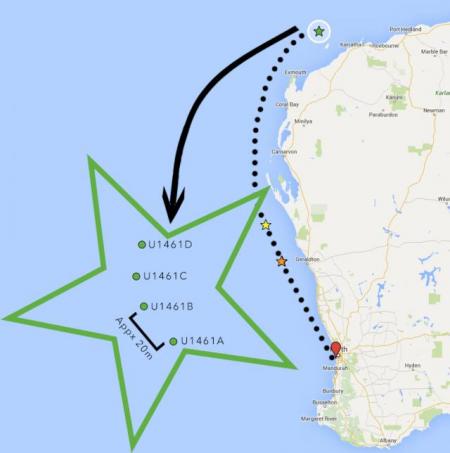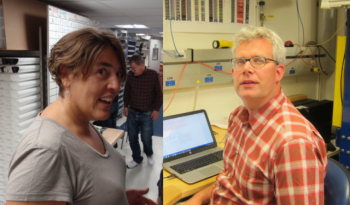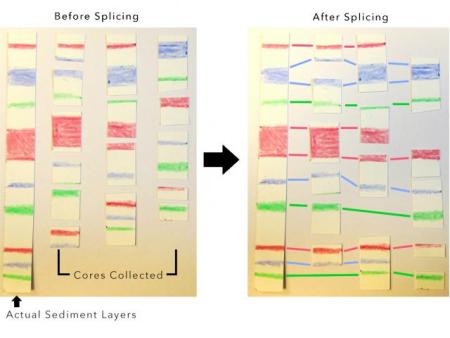
Location, location, location.
We’re almost finished with our 4th hole at this site (U1461D). But, why 4 holes at one site?
In our case, it’s mainly for….

STRATIGRAPHIC CORRELATION!
It might come as a huge surprise that the equipment, engineers, and scientists on board are only near perfectand won’t ever recover hundreds of meters of sediment all in one go. When a core is recovered, it comes up in core liners approximately 10 m long. This means we might have gaps or discrepancies within those 10 m intervals. Thankfully, we have 2 amazing stratigraphic correlators on board who’s primary job is to produce aSPLICE.


A splice is essentially a complete section that contains no gaps; in order to produce one, the correlators must have copies of material from multiple holes that they can use to close all of these gaps. These splices are really importantin helping geologists see a complete representation of the sediment layers without interruptions in the correct stratigraphic (essentially, chronological) order.
On the map you can see 4 green circles indicating the 4 holes from site U1461. They are approximately 20m from each other, which is very close in the sediment core collecting business. But it’s really important to collect cores in close proximity for good splicing to happen. And if I learned anything in statistics, repeated measurements is key to accurate correlation.representation of the sediment layers without interruptions in the correct stratigraphic (essentially, chronological) order.
As we all know, geology is a giant pyramid of various scientific data supporting each other – the findings from stratigraphic correlators support and are supported by paleontology, sedimentology and paleomagnetism. How? Stick around for future blog posts about the other science groups on the JODIES Resolution!
Jisun